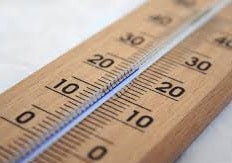 The term balance , which comes from the Latin word aequilibrium , has several meanings. It may be the state that a body registers when the forces that influence it compensate each other; to a weight that, being identical to another, counteracts it; to the situation of the object that does not fall despite its instability; or to harmony in different elements.
The term balance , which comes from the Latin word aequilibrium , has several meanings. It may be the state that a body registers when the forces that influence it compensate each other; to a weight that, being identical to another, counteracts it; to the situation of the object that does not fall despite its instability; or to harmony in different elements.
Thermal , for its part, is that linked to heat (the energy that goes from one body to another, causing changes of state) or to temperature (the magnitude that allows the level of heat to be expressed). An object is also said to be thermal when it manages to maintain its temperature.
With these ideas clear, we can focus on the definition of thermal equilibrium . This is the name given to the situation that is reached when two bodies that had different temperatures become the same temperature . In this way, the flow of heat is interrupted : energy no longer passes from one body to another precisely because both are in thermal equilibrium.
When two bodies or systems that have different temperatures are in contact, a heat transfer always occurs. This transfer can be carried out by radiation , convection or conduction , from the body with more heat to the body with less heat. The process is only suspended when the bodies reach thermal equilibrium; until then, whether faster or slower, the transfer will still take place.
Thermal balance explains the operation of thermometers . By bringing a thermometer into thermal contact with a body, heat transfer begins to occur. Only when thermal equilibrium is reached and the two bodies register the same heat, the flow stops and its temperature can be observed on the thermometer (which, due to thermal equilibrium, is the same as that of the body in question).
In 1931, the British astronomer and physicist RH Fowler stated the so-called Zeroth Law of Thermodynamics , a phenomenological principle for systems that is based precisely on the concept of thermal equilibrium. The wording of this law is as follows:
 If we have systems A and B and we place each one in a different place but in thermal equilibrium with a third, which we can call C, the first two are also in thermal equilibrium.
If we have systems A and B and we place each one in a different place but in thermal equilibrium with a third, which we can call C, the first two are also in thermal equilibrium.
It is enough to read this statement carefully to understand its logical basis: saying that A and C are in thermal equilibrium is the same as saying that their temperatures are equal, so if the temperature of A is equal to that of C, and that of B is equal to that of C, then that of A is equal to that of B. It is interesting to mention that RH Fowler stated this law when the first and the second already existed, but since it became a fundamental source for these two was what They assigned the name the zeroth law .
Thermodynamics is the part of physics that is responsible for describing the equilibrium states of systems and does so at a macroscopic level, that is, without focusing on the phenomena that take place at a microscopic level within the hypotheses it presents. Despite this, disciplines such as statistical physics do carry out a microscopic study of the phenomena belonging to thermodynamics, and thermal equilibrium is one of them.
If we look at this phenomenon from a microscopic perspective, we can understand the temperature in relation to the average kinetic energy of the particles that make up the system, among which are its molecules and atoms.
